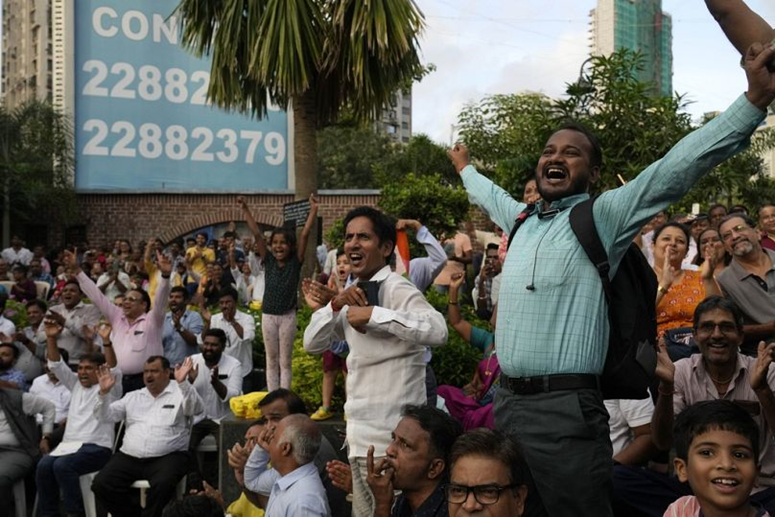"A success for humanity"... The Indian Chandrayaan-3 mission lands safely on the moon

Once the vehicle lands, the robot, a solar-powered rover, will begin to explore the surface and transmit data back to Earth for two weeks.
India's unmanned spacecraft landed safely on the moon Wednesday on what Prime Minister Narendra Modi called a "historic" day for the world's most populous country, joining the club of few countries to land on the moon after four years of a failed attempt.
The mission technicians met with cheers of joy and applause the Indian Space Research Organization (ISRO) announcement at its headquarters that the "Chandrayaan-3" spacecraft successfully landed on the moon's surface at 12:34 GMT.
"Historic day for the Indian space sector," Modi wrote on the X platform.
"Hindu ritual"
Chandrayaan- (meaning the lunar module in Sanskrit) landed days after the Russian Luna-25 probe crashed in the same region near the unexplored south pole of the moon, in a setback that came decades after the Soviet Union succeeded in a similar mission in 1976.
This success of the Indian space program comes four years after the failure of a previous Indian mission, with which the ground team lost contact before it reached the moon.

Citizens celebrate the successful launch of the Rajanish Kakade/Copyright 2022 missile The AP
"On this auspicious occasion, I would like to address the people of the world. India's successful mission to the moon is not just a mission for India alone. This success is dominated by all mankind," Modi said on the sidelines of the BRICS summit in South Africa, waving an Indian flag.
The Chandrayaan-3 mission has captured public attention since it was launched nearly six weeks ago in front of thousands of spectators. Politicians held Hindu ritual prayers for the success of the mission, and school children watched the last moments of the landing via live broadcast in the classrooms.
The vehicle, developed by the Indian Space Research Organization, includes the 'Vikram' (bravery in Sanskrit) lander and the 'Pergyan' (wisdom) mobile robot to explore the lunar surface.

Once the vehicle lands, the robot, a solar-powered rover, will begin to explore the surface and transmit data back to Earth for two weeks.
Qualified engineers
The Chandrayaan-3 mission is slower than the American manned "Apollo" missions in the sixties and seventies, which reached the moon within a few days.
The Indian missile is less powerful than the "Saturn 5" missile used in the US Apollo lunar program. It had to circle the Earth several times to increase its speed before making its path to the moon, which took a month.

Citizens celebrate the successful launch of the missile. Anupam Nath/Copyright 2023 The AP
Vikram separated from the booster rocket last week and has been transmitting images of the lunar surface since it entered orbit on August 5.
The budget of the Indian space program remains modest, although it has increased significantly since the first attempt to put a probe into lunar orbit in 2008.
The cost of this Indian mission is 74.6 million dollars, according to local media, which is much less compared to the missions of other countries.

global contribution
According to industry experts, India manages to keep costs down by copying and adapting existing space technology for its own purposes thanks to an abundance of qualified engineers who are paid much less than their foreign counterparts.
The previous attempt to land on the moon in 2019, coinciding with the fiftieth anniversary of the first mission of US astronaut Neil Armstrong, cost $ 140 million, almost double the cost of the current mission.
India was the first Asian country to put a satellite into Mars orbit in March. It is supposed to send a manned three-day mission into Earth orbit by next year.
The former head of the Indian Space Agency, K. Sivan said India's efforts to explore the moon's south pole would be a "very significant" contribution to scientific knowledge.
India thus joined only three countries that preceded it to this achievement of successfully landing unmanned vehicles on the surface of the moon, namely Russia, the United States and China.
Source: websites

